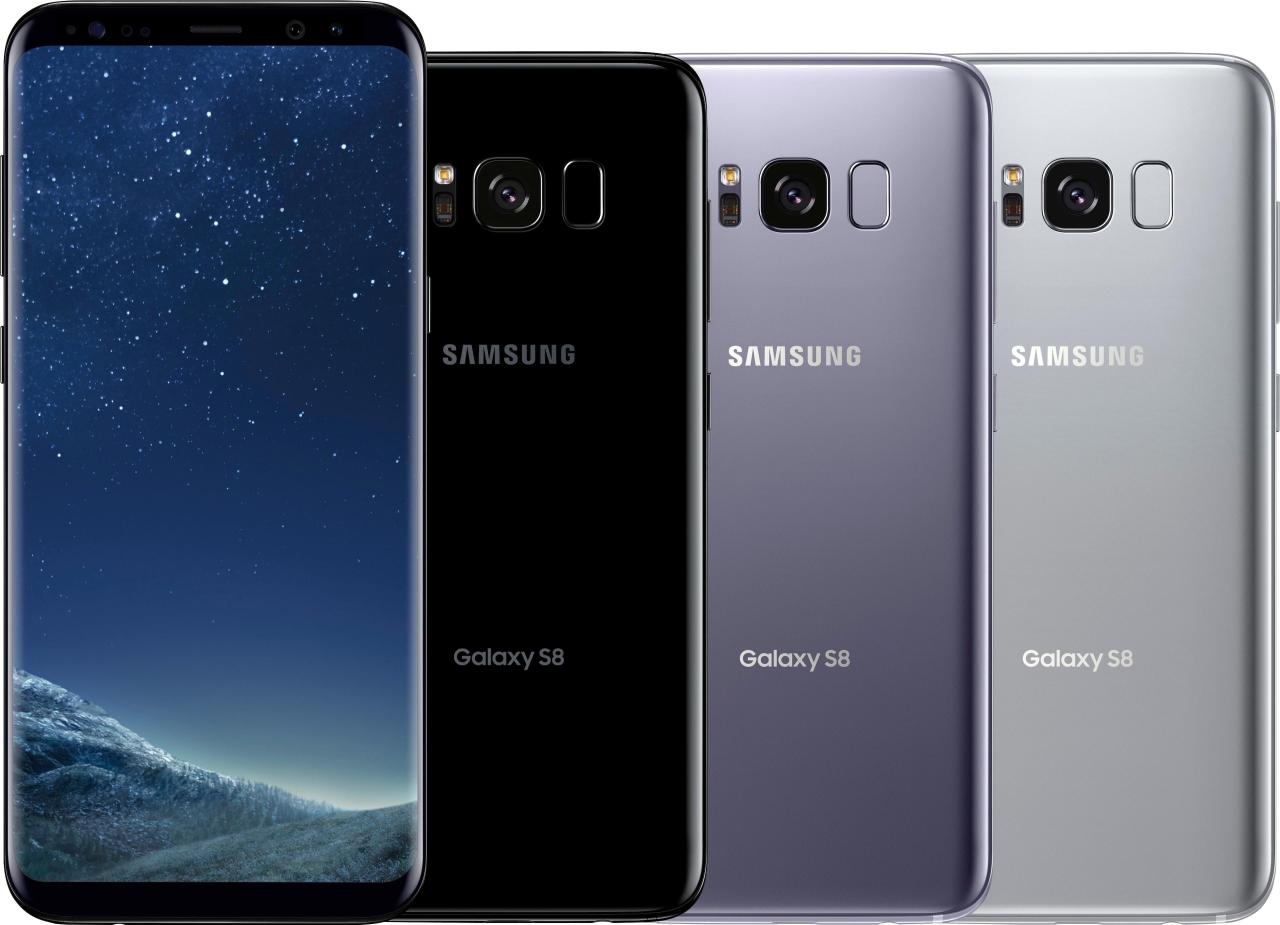Galaxy Note 2 is a milestone in mobile technology, seamlessly blending impressive specifications with innovative features that set it apart in a crowded smartphone market. Launched at a time when phablets were still gaining traction, it carved a niche for itself by offering users a unique combination of productivity and entertainment, thus changing the way we interact with our devices.
As we dive deeper into its history and evolution, we discover how the Galaxy Note 2 emerged from its predecessor, boasting remarkable advancements in hardware and software that catered to a diverse range of users. This device not only enhanced the smartphone experience but also laid the groundwork for future innovations within the Galaxy Note series.
History and Evolution of Galaxy Note 2
The Galaxy Note 2 was officially launched by Samsung in September 2012, marking a significant evolution in the phablet category that the company had pioneered with the original Galaxy Note. This device not only reinforced Samsung’s commitment to the large-screen smartphone segment but also showcased the advancements in mobile technology that were becoming increasingly relevant to users.
The development of the Galaxy Note 2 followed the positive reception of its predecessor, the Galaxy Note, which introduced the concept of the stylus in smartphones. Samsung aimed to enhance the user experience with the Note 2 by refining the hardware and software. This evolution was characterized by a larger display, improved S Pen features, and a more powerful processor.
Key Features Distinguishing Galaxy Note 2
The Galaxy Note 2 stood out in a competitive smartphone market due to several key features that set it apart from its predecessors and contemporaries. Some notable advancements included:
- Display: The Note 2 featured a 5.5-inch Super AMOLED display, larger than its predecessor, providing users with an immersive viewing experience for media and multitasking.
- S Pen Enhancements: The upgraded S Pen included improved pressure sensitivity and additional features such as Air View, allowing users to preview content without having to open apps, enhancing productivity.
- Processor and Performance: Equipped with a quad-core processor, the Note 2 delivered superior performance compared to the original Note, ensuring seamless multitasking and efficient app usage.
- Design: The device had a more refined and ergonomically designed body, allowing for a more comfortable grip despite its larger size.
Technological Advancements Introduced with Galaxy Note 2
The technological innovations presented with the Galaxy Note 2 were significant, reflecting Samsung’s vision for the future of mobile devices. Several advancements included:
- Multi-Window Functionality: This feature allowed users to run two applications simultaneously on the screen, enhancing productivity and multitasking capabilities.
- Improved Battery Life: The Note 2 came with a larger battery compared to its predecessor, providing extended usage time and reducing the frequency of charging.
- Camera Technology: The device featured an 8 MP rear camera with improved image processing capabilities, enabling users to capture high-quality photos and videos under various conditions.
- Software Features: The Note 2 launched with Android 4.1 Jelly Bean, bringing enhancements in performance and user interface, further improving the overall user experience.
Specifications and Features of Galaxy Note 2

The Galaxy Note 2, launched by Samsung in 2012, was a significant milestone in the realm of smartphones, marrying advanced specifications with user-friendly features. This device was recognized not only for its impressive hardware but also for its innovative software capabilities that catered to a wide array of users, from business professionals to creatives.
The Galaxy Note 2 came equipped with impressive hardware specifications that set it apart in the competitive smartphone market. The device featured a powerful processor, ample RAM, and various storage options, making it suitable for multitasking and demanding applications.
Hardware Specifications
The hardware of the Galaxy Note 2 included several notable features that contributed to its performance and usability:
– Processor: The device was powered by a 1.6 GHz quad-core Exynos 4412 processor, enabling smooth operation and efficient multitasking.
– RAM: It came with 2GB of RAM, which was impressive for its time, facilitating seamless app usage and faster performance.
– Storage Options: Users had the option of choosing between 16GB, 32GB, or 64GB of internal storage, with the ability to expand further via a microSD card slot supporting up to 64GB, allowing for significant data storage.
Software Features and User Interface Enhancements, Galaxy note 2
The Galaxy Note 2 was not just about hardware; its software enhancements played a crucial role in its appeal. Samsung introduced several features designed to enhance user experience and productivity:
– S Pen: The inclusion of the S Pen stylus was a game-changer, providing users with intuitive ways to interact with the device, including note-taking, drawing, and precise navigation. The S Pen also featured pressure sensitivity, which allowed for more versatile use in creative applications.
– Multi-Window Feature: This innovative software addition allowed users to run two apps side by side on the large 5.5-inch display, maximizing productivity by making it easier to multitask.
– Popup Note: Users could quickly create notes on the fly without leaving the current application, ensuring that thoughts and ideas could be captured instantly.
– Smart Stay: This feature used the front-facing camera to detect whether the user was looking at the screen, preventing it from dimming as long as they were engaged.
– Enhanced User Interface: TouchWiz interface improvements offered a smoother, more customizable user experience, with options for widgets, themes, and layout adjustments.
Comparison of Features with Other Smartphones
To understand the Galaxy Note 2’s standing in the smartphone landscape at the time of its release, the following table compares its key features with those of competitors such as the iPhone 5 and HTC One X:
| Feature | Galaxy Note 2 | iPhone 5 | HTC One X |
|---|---|---|---|
| Processor | 1.6 GHz Quad-Core Exynos 4412 | 1.3 GHz Dual-Core A6 | 1.5 GHz Quad-Core NVIDIA Tegra 3 |
| RAM | 2GB | 1GB | 1GB |
| Display | 5.5-inch Super AMOLED | 4.0-inch Retina Display | 4.7-inch Super LCD 2 |
| Internal Storage | 16/32/64GB (expandable) | 16/32/64GB (non-expandable) | 32/64GB (non-expandable) |
| Camera | 8 MP Rear, 1.9 MP Front | 8 MP Rear, 1.2 MP Front | 8 MP Rear, 1.3 MP Front |
The Galaxy Note 2 set a benchmark for phablets, combining a powerful hardware configuration with innovative software features that catered to both productivity and creativity.
User Experience and Reviews: Galaxy Note 2

The Samsung Galaxy Note 2, launched in 2012, quickly garnered attention for its innovative features and impressive capabilities. User experiences have played a significant role in shaping its reputation, with testimonials highlighting both strengths and weaknesses that resonate across various demographics. As a phablet that bridged the gap between a smartphone and a tablet, the Galaxy Note 2 offered unique advantages that catered to diverse user needs.
User reviews provide valuable insights into the practicality and performance of the Galaxy Note 2. The feedback from everyday users, professionals, and content creators illustrates the device’s versatility and usability in real-world situations. Below are summaries of the strengths and weaknesses as perceived by users.
User Testimonials: Strengths and Weaknesses
The following points encapsulate key user experiences with the Galaxy Note 2, showcasing what users appreciated and what they felt could be improved.
Pros:
-
Large Display:
Users praised the 5.5-inch Super AMOLED display for its vibrant colors and excellent visibility, making it ideal for media consumption and productivity tasks.
-
S Pen Functionality:
The S Pen was highlighted as a major benefit, enabling precise note-taking, sketching, and enhanced navigation.
-
Battery Life:
Many users reported impressive battery longevity, allowing for a full day of usage even with heavy workloads.
-
Performance:
The device’s powerful hardware, including the Exynos processor, facilitated smooth multitasking and gaming experiences.
-
Multifunctionality:
Users appreciated the dual functionality as both a phone and tablet, catering to different needs without sacrificing performance.
Cons:
-
Size:
Some users found the large size cumbersome for one-handed use, making it challenging to carry in pockets.
-
Software Updates:
A segment of users expressed dissatisfaction with the speed of software updates, noting that newer features available on other devices were not immediately accessible.
-
Camera Limitations:
While the camera was adequate, some users felt that it did not match the capabilities of dedicated cameras or newer smartphones.
-
Weight:
Users noted that the Galaxy Note 2 felt heavier than competitors, which affected portability during extended use.
-
Durability:
There were concerns about the fragility of the device, particularly the screen, which was prone to scratches without adequate protection.
Common Use Cases Among Different Demographics
The Galaxy Note 2 found its way into the hands of various users, each leveraging its features to suit their specific needs. Here are some notable use cases:
-
Students:
The S Pen was particularly beneficial for students, enabling them to take notes directly on the device, annotate PDFs, and create mind maps.
-
Professionals:
Many professionals utilized the device for business purposes, including email management, calendar scheduling, and document editing on the go.
-
Artists and Creatives:
The Galaxy Note 2 attracted artists who used the S Pen for drawing and designing, taking advantage of apps like S Note and SketchBook.
-
Media Consumers:
Users seeking a portable entertainment device appreciated the large display for watching videos, reading e-books, and browsing the internet.
-
Gamers:
The powerful performance made it suitable for gaming, with many users enjoying popular titles thanks to the responsive touch screen and robust hardware.
Market Impact and Legacy of Galaxy Note 2

The Galaxy Note 2 was more than just a smartphone; it was a pivotal device that significantly influenced the trajectory of the smartphone industry. Launched in 2012, it was one of the first devices to successfully merge the functionalities of a smartphone with the capabilities of a tablet, giving rise to the popular “phablet” category. This innovation not only set the stage for future devices but also forced competitors to rethink their design and feature strategies.
The sales performance of the Galaxy Note 2 was impressive, reflecting its acceptance in the market. Within the first few months of its launch, it sold more than 3 million units globally, which further grew to over 30 million units by the time it was phased out. This success contributed to Samsung’s substantial market share in the premium smartphone segment, allowing the company to maintain its lead in the market against competitors like Apple and HTC. The Galaxy Note 2’s unique features, including the S Pen and its large display, were significant differentiators that appealed to a wide range of consumers, from professionals to creative individuals.
Influence on Competitors and the Industry
The Galaxy Note 2’s introduction of the phablet form factor not only shaped Samsung’s future offerings but also prompted immediate responses from other major smartphone manufacturers. Following its success, many brands started to explore larger screen devices equipped with stylus functionality or similar features. Below are some notable impacts on the industry and competitors:
- Apple’s introduction of larger iPhones: Following the Note 2’s success, Apple expanded the iPhone lineup to include larger models, ultimately leading to the release of the iPhone 6 Plus in 2014.
- HTC’s move towards larger displays: HTC launched several phablet models to compete directly with Samsung, including devices from their One series.
- LG’s G Pro series: LG introduced its own series of phablets, directly inspired by the Note series, capitalizing on the growing trend for larger screens.
The Galaxy Note 2’s legacy extends beyond its initial impact; it established a new standard in smartphone design and functionality. The integration of the S Pen allowed for features such as handwriting recognition and improved multitasking capabilities, which became benchmarks for subsequent models in the Galaxy Note series.
Comparison with Subsequent Galaxy Note Models
The Galaxy Note 2 laid the groundwork for its successors, which have built upon its innovations while introducing cutting-edge technology. Each new model in the Galaxy Note series has aimed to enhance user experience and improve functionality based on consumer feedback and technological advancements. Key comparisons include:
| Model | Display Size | S Pen Features | Camera Quality |
|---|---|---|---|
| Galaxy Note 2 | 5.5 inches | Basic gesture support | 8 MP |
| Galaxy Note 3 | 5.7 inches | Advanced Air Command features | 13 MP |
| Galaxy Note 4 | 5.7 inches | Enhanced precision and pressure sensitivity | 16 MP |
The advancements in display technology, camera capabilities, and S Pen functionality are evident in these comparisons. Each model after the Note 2 has contributed to elevating the Galaxy Note series into a premium product line, solidifying its reputation and legacy in the smartphone market.
“The Galaxy Note 2 was not just a device; it was a game changer that redefined how users interacted with their smartphones.”
Expert Answers
What is the battery capacity of the Galaxy Note 2?
The Galaxy Note 2 has a battery capacity of 3100 mAh.
Is the Galaxy Note 2 water-resistant?
No, the Galaxy Note 2 is not water-resistant.
What operating system does the Galaxy Note 2 run on?
The Galaxy Note 2 originally launched with Android 4.1 Jelly Bean.
Does the Galaxy Note 2 support expandable storage?
Yes, the Galaxy Note 2 supports expandable storage via a microSD card up to 64GB.
What size is the display on the Galaxy Note 2?
The Galaxy Note 2 features a 5.5-inch Super AMOLED display.
The Samsung S10 stands out in the smartphone market with its stunning display and powerful performance. Users appreciate its versatile camera system, which captures stunning photos in various lighting conditions. With features designed for both productivity and entertainment, it’s no wonder the S10 remains a popular choice among tech enthusiasts.
When discussing flagship devices, the Samsung Galaxy Note 7 often comes to mind, despite its controversial history. Its innovative design and the introduction of the S Pen made it a game-changer in the phablet category. Even after the challenges it faced, the Note series continues to influence smartphone design and user experience.